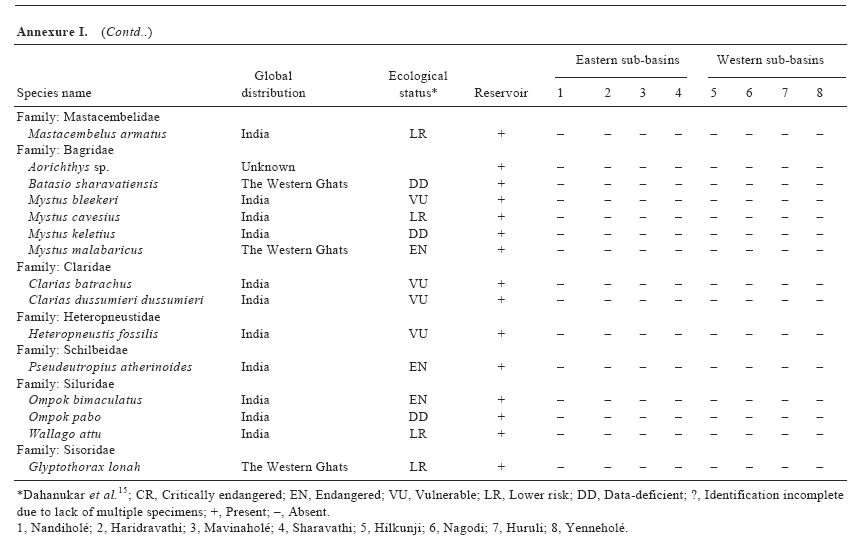Conclusion |
Analysis of fish species composition, distribution and ecological status with reference to the terrestrial ecosystem in the catchment, revealed preference of the endemic fish fauna to perennial streams with their catchments having evergreen to semi-evergreen forests, which also have higher levels of plant endemism. On the contrary, streams whose catchments have moist deciduous forest or its degraded stages with low degree of endemism, have fishes with wider distribution ranges and few endemic species. PCA and partial correlation coefficient have revealed the influence of landscape variables on fish species richness, endemism and their ecological status. The fact that the eastern catchment, having relatively lesser rainfall and deciduous forest as the dominant type, had evergreen forests once, indicates that the stream of the eastern catchment also would have had high species richness and higher endemism among the fishes. Due to the spread of agriculture, large areas under forest monoculture and deciduous forests – resultant of fire, there is a decline in fish species richness, particularly pushing the endemic fish fauna of the streams to the verge of extinction. While conceding the need for adopting more sophisticated experimental designs in future, this study indicates the need for adoption of a holistic ecosystem management for conservation of particularly the rare and endemic fish fauna of the Western Ghats. The premium should be on conservation of the remaining evergreen and semievergreen forests, which are vital for the perenniality of streams. Through appropriate management there still exists a chance to restore the lost natural evergreen to semievergreen forests in those catchments where the annual rainfall is down to 1800 mm. Historical records and relic patches provide ample evidence that such vegetation existed in the past. Natural forests in the lower rainfall areas of the Western Ghats are more fragile and are therefore prone to lose their evergreenness faster than those in high-rainfall areas. This study highlights that endangered and endemic fish species are precariously clinging onto the stream habitats where patches of primaeval forests, though degraded substantially, still persist.

We thank the scientists and staff, Zoological Survey of India, Southern Regional Station, Chennai for help during the course of this investigation. We express our gratitude to Dr K. C. Jayaram, Chennai for timely help and valuable suggestions. We also thank the Ministry of Environment and Forests, Government of India and Karnataka Power Corporation Limited, Government of Karnataka for the financial support. Remote sensing data required for the analysis were provided by National Remote Sensing Agency, Hyderabad. We thank our colleagues Vishnu D. Mukri, Shridhar Patgar, S. Ali, Lakshminarayana, Pankaj Kumar Mohanta and Susanto Sen and also the fishermen of Linganamakki reservoir for assistance during field investigations.